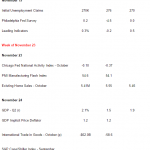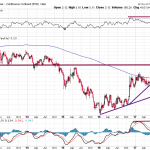
Western countries frequently complain that Chinese firms do not innovate, rather they copy western ideas and technology. So how does the West respond when Chinese firms actually do innovate?Nicholas Welch and Kevin Zhang have an interesting article on the US response to innovation in the Chinese electric vehicle industry:
Since Chinese EV manufacturers “poach” Western designers, many people might assume that only the Chinese are stealing product ideas and intellectual property. But in the world of EVs, we’re actually starting to see the Chinese innovate (out of competitive necessity) and Western EV manufacturers starting to “borrow” stale Chinese designs. . . .
I think the real rationale for the tariffs is that the US EV industry — and the Japanese and Korean automakers that have US manufacturing operations — just doesn’t have very competitive offerings on the market. Therefore, the US has made the strategic decision to prioritize building a competitive EV industry at the expense of the American consumer in the short-term.
Adam Tooze has an excellent article explaining that the world has seen an unexpectedly rapid growth in green energy over the past few years, almost all due to China:
China’s huge surge in renewable energy, above all in solar power, actually puts us on track for the first time to meet these objectives. As Ember reports it has taken experts around the world by surprise:
Each year the IEA has upgraded predictions: from 2021 to 2022 to 2023 the IEA’s accelerated case scenario predicted that 2023 annual additions would be 218 GW, 257 GW, and 406 GW, respectively. With recent updates from China, the actual additions for 2023 are 444 GW according to BNEF. To put the scale of additions in 2023 into context, annual additions of solar capacity had not broken 200 GW per year until 2022, which itself was a record year.
Having shattered all previous experience of renewable power rollout, China’s huge surge in solar now actually puts us within striking distance of achieving a net zero path, driven by green electric power. . . . What we are witnessing is the most rapid take-up of a significant energy technology in history.
Was China praised for this innovation? Just the opposite:
The response of Western politicians? Protectionism. Of course there are complex motives. They need to build coalitions to sustain the energy transition. They are worried about the CCP regime in China. They want to escape extreme dependence on imported sources of energy (though of course in the renewable space it is capital equipment not energy they are importing). But the more basic question is simply this. Are Western government and societies willing to prioritize the energy transition if it is not their drama, not their success story? Or, if the PV panels and the electric vehicles are from China, do other interests take priority?
One of the most impressive examples of Chinese innovation is the social media site TikTok. How did the US government respond? By banning the app. We are also doing all we can to stop innovation in China’s computer chip industry.I see a certain ambivalence in Western attitudes toward China. We don’t want China to be a highly successful technology superpower, because that supposedly threatens our national security. We don’t want China to be a non-innovative middle income country that merely borrows technology from the West, because that supposedly threatens jobs in our less dynamic industries. We seemed happiest with China when it was a highly inefficient low income country with its people living on the edge of starvation, cut off from the rest of the world. North Korea with a billion people. China’s not likely to accommodate our wishes, nor should it.There is also a reluctance to acknowledge Chinese achievements in science, despite the fact that by some highly respected measures they are among the world leaders in scientific achievements. Nationalism distorts our view of the world.PS. Reason magazine has an excellent article on Chinese innovation. They point out that estimates of Chinese intellectual theft are essentially worthless (although it undoubtedly occurs quite often.) There’s also this:
The final piece in the “we wuz robbed” argument is the claim that Chinese companies “steal” the I.P. of their American partners in joint ventures. China’s prowess at the negotiation table is undeniable, and it wields its bargaining power aggressively to trade access to Chinese markets for learning. Yet the American companies that claim to be victims enter into these agreements freely and rarely come out net losers. These U.S. businesses have raked in trillions in sales and pocketed hefty profits—a testament to their ability to navigate the competitive landscape.
The hawks vastly overestimate the value of any I.P. that can actually be stolen. Clueless about the technologies that most concern them, the hawks fixate on the blueprints without appreciating the craftsmanship required to bring them to life. After all, the secrets of technological innovation aren’t hidden. The recipes for making microchips have been available in university libraries for almost 70 years, but building them takes far more than just following instructions.
More By This Author:Read It And Weep
Melancholia – AI Version
Double Trouble









Leave A Comment